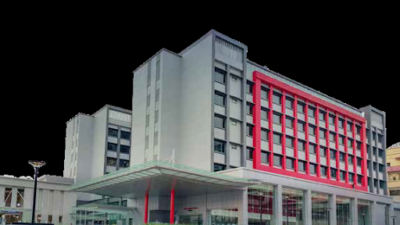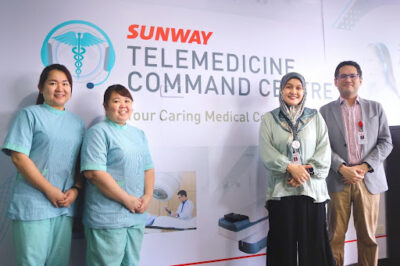
This site
is mobile
responsive

One of the great challenges facing humankind in the 21st century is achieving equitable access to high-quality healthcare. A major reason certain communities do not have the same level of access to healthcare facilities was due to location as the healthcare providers (doctor, medical officer, nurse, etc) and recipient (patient) must be present in the same place and at the same time. Patients in remote or rural areas located far away from a major hospital or clinic suffered from lower healthcare service quality.
However, due to the pandemic-accelerated digitalisation and user familiarity with digital services across Malaysia, healthtech and medtech solutions are giving the healthcare industry unique ways to overcome the traditional barriers to inclusive healthcare. Telemedicine, the area where medicine, information and communication technologies (ICT) meet, is part of this revolution that could revolutionise healthcare delivery.
Telemedicine is the delivery of healthcare and the exchange of healthcare information beyond borders. It includes a whole range of medical activities including diagnosis, treatment and prevention of disease, continuing education of healthcare providers and consumers, as well as research and evaluation.
Types of Telemedicine
The common thread for all telemedicine applications is that a client (e.g. patient or healthcare worker) obtains an opinion from someone with more expertise in the relevant field, when the parties are separated in space and/or time. Telemedicine may be classified on the basis of the interaction between the client and the healthcare expert, and the type of information being transmitted.
The type of interaction can be pre-recorded or happen in real time. In the former, information is acquired and stored in a specific format, before being sent for expert interpretation at a suitable time later via email or other file sharing methods.
In real-time interactions, there is no delay between the information being collected, transmitted, and displayed. Interactive communication between individuals at the sites is therefore possible. Video conferencing is a common method of real time interaction, and with the proliferation of 5G services and high-speed broadband connectivity across Malaysia, real-time telemedicine is on the uptick.
Government Support for Promoting Telemedicine
Malaysia began implementing e-health services as early as July 1997, when the country’s Telemedicine Blueprint was launched. The blueprint’s objectives were to strengthen healthcare delivery via the use of telecommunications, information and multimedia technologies. Telehealth was envisioned as a tool to reshape the healthcare delivery system by becoming more virtual, widely distributed, and highly integrated, resulting in better and more efficient healthcare delivery.
Telemedicine, which enables video or phone appointments between a patient and their healthcare practitioner, benefits both health and convenience. Through advanced care at home, patients with conditions previously managed in a hospital will have the option to transition to a home setting and receive compassionate, high-quality virtual and in-person care and recovery services.
The Government through the Malaysian Investment Development Authority (MIDA) introduced the Automation Capital Allowance (ACA) to help companies increase productivity and adopt digitalisation in their services. Under Budget 2020, the ACA was extended to cover the services sector for the first RM2 million incurred for eligible capital expenditure, namely machines, equipment and software, from the year of assessment 2020 to the year of assessment 2023.
The Smart Automation Grant (SAG) under PENJANA and PEMERKASA was also offered to companies in the services and manufacturing sectors to automate and digitalise their operations, production, and trade channels. The SAG under PENJANA expired at the end of 2021 while the SAG under PEMERKASA will expire at the end of 2022, subject to the availability of funds.
Sunway Medical Centre’s Telemedicine Initiative
Telemedicine also has the support of key private healthcare providers in Malaysia. Sunway Medical Centre, one of the region’s leading tertiary hospitals with quaternary services, launched aCommand Centre for Telemedicine Services in early 2021.
The Command Centre is located at the flagship hospital at Sunway City Kuala Lumpur. The first phase of the Telemedicine Command Centre provides first level healthcare advisory services to patients. The centre operates on a 24 x 7 basis, and patients can either call in, email or reach out through social media platforms i.e., Facebook and WhatsApp. Once the enquiry is received, the attending nurse or medical officer will provide advice or make recommendations to consult a specialist at Sunway Medical Centre.
With strong public and private sector support for telemedicine services as well as a highly receptive and digitally-literate local population, Malaysia has successfully attracted multinational healthtech and medtech investors looking for a regional or global hub from which they can expand their telemedicine offerings to the wider Southeast Asian or Asia Pacific region.

